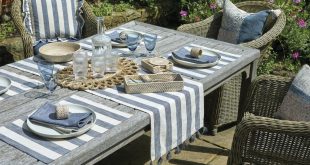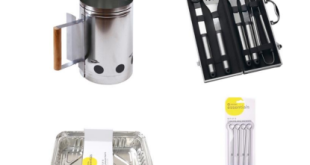 Mary Portas took another look at the British public’s shopping habits last Thursday evening (June 23), when she hosted episode two of Channel 4’s ‘What Britain Buys’.
Mary Portas took another look at the British public’s shopping habits last Thursday evening (June 23), when she hosted episode two of Channel 4’s ‘What Britain Buys’.
In the show, the retail consultant met buyers, trendsetters and consumers to find out what we’re spending our money on and why.
She kicked off by saying: “In 2016 it’s not just what we buy but how we buy that’s changing. Surprisingly, in a country where cash has always held a special place in our hearts, we’ve embraced a new way to pay.
“Just as electronic banking put paid to the trusty old cheque, so contactless payment could mean the end of cash.”
Tami Hargreaves, commercial director of digital consumer payments at Barclaycard, said that last year we spent nearly £8bn on contactless payments. “Roll forward, and we’re now spending £1bn in contactless payments every month,” she said.
Mary noted that superseding the contactless card is payment by mobile or smart watch and that in the future there will be opportunities to pay using biometrics (authentication techniques that rely on measurable physical characteristics that can be automatically checked).
She continued: “With technological advances moving even faster – where even new products can become obsolete almost as soon as they’ve been invented – there are some surprising trends in 2016 that no one could have predicted.”
Mary highlighted the case of microwave ovens. “When they first appeared in our kitchens, they were seen as a bright exciting new future,” she said. “By 1975, sales even outstripped gas ovens. But two years ago most of us would have considered the microwave as slightly irrelevant. Now, the microwave could be making a comeback.”
Matthew Canwell, director of buying of Lakeland, confirmed that the housewares chain’s microwave sales are up 20% this year “in what we would consider a very mature market, really”.
He believes the reason is two-fold. “First and foremost, we love speed, and the microwave is going to help us do things very quickly – but it actually does it in a very healthy way. What a microwave is great at is that it works by heating water molecules and creating steam, and steaming is a really healthy way to cook.”
Mary then noted that microwaves “are not just a health food gadget”. She cited the example of Lakeland’s Cake in a Mug, for which sales have grown by 40% this year.Matthew said: “We know people are eating more healthily but actually they do want a little bit of indulgence and they want something for ‘me’.”
This product promises to make freshly-baked chocolate cake in an instant. The user adds dry ingredients (not supplied) to the ceramic mug – the inside of which shows the levels required – and pops it in the microwave for three minutes.
And according to Matthew, Cake in a Mug is part of a bigger trend. “We’re actually seeing people making whole meals in a mug as well,” he said. Lakeland’s Meal in a Mug Microwave Recipes Book, for instance, features 80 meals from Smoked Haddock Chowder and Spicy Lentil and Bacon Soup to Chicken Korma and Spinach and Ricotta Lasagne
Matthew said this type of cooking suits shoppers short on time, from students to the 30% of households that are now single-person. “They just want something quick, easy and nutritious,” he said.
Mary concluded to Matthew: “I would not have thought I’d be standing here saying microwave sales are up. I just didn’t think it was coming back. But it makes sense because what you’re effectively saying is we are time-poor but we want the health and the positive stuff that goes with it.”
“Absolutely,” he replied. “And this delivers on both of those things.”
Other products featured on the show included the Dash Cam (a dashboard camera that captures footages of your car journeys) which has become one of the fastest-growing products in the consumer electronic market. Jon Oliver, category manager – technology of Halfords, said the car parts retailer has reported over 200% growth year-on-year.
Innovations in skincare from Asia, particularly South Korean beauty products, have found their way onto the shelves of high street chemists too, such as BB [Blemish Balm] Cream, CC [Colour Corrector] Cream, essence and body skin body masks for skin. masks.
And in women’s fashion, leggings (a skin-tight garment that covers the legs) are proving hugely popular. High street workout wear brand Sweaty Betty expects to sell over 100,000 pairs of leggings this year and predicts even higher sales next year.
Sweaty Betty founder and creative director Tamara Hill-Norton said: “Particularly in the last couple of years we’re selling more leggings than any other category in our business. That’s the way fashion is going, I think: it’s becoming much more sporty and athletic.”
This trend has attracted a new buyer to the market: ‘meggings’ (male leggings) are the latest innovation in men’s fashion. Jonathan Lomax, ceo of Lomax Fitness, Nutrition and Wellbeing, explained why. “Men are wearing leggings a lot more as the male image has changed from being all about your beach muscles, your chest and your six-pack… now a real man always trains legs. Therefore we’re happy to wear brighter colours and patterns to show off our well-developed legs.”
In episode three of Channel 4’s ‘What Britain Buys’, which airs on Thursday (June 30) at 8pm, Mary looks at why Brits spend £4.6 billion a year on pets, finds out which 1970s products are making a comeback, and asks: why is Victoria Beckham wearing flat shoes rather than high heels?
Lakeland’s Meal in a Mug Microwave Recipes Book
 Housewares Business-to-business magazine for housewares retailers and their suppliers
Housewares Business-to-business magazine for housewares retailers and their suppliers



